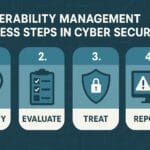In today’s world Opensource Threat Detection Tools like Suricata, Zeek, OSSEC, Wazuh, and Security Onion offer real-time cyber threat detection that’s powerful, flexible, and budget-friendly. With community support, high customisability, and transparent development, these solutions enable security teams to spot threats as they unfold—protecting networks, endpoints, and cloud systems. Implementation requires strategy and skill but brings immense value in a fast-evolving threat landscape.
In today’s fast-paced digital world, cyber threats are not just a possibility; they are a constant reality. From sophisticated ransomware attacks to subtle data breaches, organisations face an ever-growing array of dangers. The key to staying secure isn’t just reacting to attacks, but detecting them as they happen, in real time. This proactive approach allows security teams to minimise damage, protect valuable assets, and maintain trust. While many commercial solutions exist, open-source threat detection tools offer a powerful, flexible, and often cost-effective alternative for businesses of all sizes. They empower security professionals with transparency, community support, and the ability to customise solutions to their unique needs.
Critical Insights
- Real-time threat detection is critical: Identifying cyber threats as they occur is essential for minimizing damage and protecting sensitive data in today’s dynamic threat landscape.
- Open-source tools offer powerful advantages: They provide flexibility, transparency, strong community support, and often a lower total cost of ownership compared to proprietary solutions.
- Top tools include Suricata, Zeek, OSSEC, Wazuh, and Security Onion: Each offers unique strengths, from network intrusion detection to host-based security and comprehensive security monitoring.
- Effective implementation requires strategy: Success with open-source tools depends on proper planning, integration, skilled personnel, and a commitment to continuous monitoring and adaptation.
- The future is collaborative and intelligent: Open-source cybersecurity is evolving rapidly, with increasing integration of AI, machine learning, and collaborative intelligence to enhance detection capabilities.
What is Real-time Cyber Threat Detection?
Real-time cyber threat detection is the process of identifying and responding to malicious activities or security incidents as they unfold within a network or system. Unlike traditional security measures that might only alert after an attack has been completed, real-time detection aims to catch threats in their infancy. Imagine it like a security guard watching surveillance cameras constantly, rather than just reviewing footage after a break-in.
This involves continuous monitoring of network traffic, system logs, user behaviour, and application activities. When suspicious patterns or anomalies are detected – such as unusual logins, large data transfers, or connections to known malicious IP addresses – the system immediately flags them. This immediate alert allows security teams to investigate, contain, and neutralise threats before they cause significant harm.
The Urgency of Real-time Detection
Why is this so important? Consider the financial and reputational fallout from a successful cyberattack. According to IBM’s 2024 Cost of a Data Breach Report, the average cost of a data breach reached $4.45 million globally, a 15% increase over three years. For critical infrastructure sectors, this cost can be even higher. For example, the impact of a significant cyberattack, like the one experienced by Malaysia Airports, can disrupt operations, compromise sensitive data, and erode public trust.
A timely detection can:
- Minimize Financial Losses: Prevent data exfiltration, service disruption, and ransomware payments.
- Protect Sensitive Data: Safeguard customer information, intellectual property, and business secrets. For more on this, consider exploring strategies for data loss prevention (DLP).
- Maintain Business Continuity: Keep systems operational and services available.
- Preserve Reputation: Show customers and partners that security is a top priority.
- Comply with Regulations: Meet legal and industry requirements for data protection and incident response.
Why Choose Open-Source Threat Detection Tools?
Open-source software is code that is freely available for anyone to use, modify, and distribute. In the realm of cybersecurity, open-source tools have become incredibly popular, and for good reason. They offer a compelling alternative to proprietary solutions, especially for organizations seeking robust security without the hefty price tag.
Advantages of Open-Source Tools
- Cost-Effectiveness: Often, the primary appeal is the lack of licensing fees. While there are costs associated with deployment, maintenance, and potentially professional support, the initial investment is significantly lower.
- Transparency and Trust: The code is open for anyone to inspect. This transparency allows security experts to verify its integrity, identify potential vulnerabilities, and understand exactly how the tool operates. This builds a higher level of trust compared to “black box” proprietary solutions.
- Flexibility and Customization: Organizations can modify the source code to fit their specific needs, integrate with existing systems, or develop custom detection rules tailored to their unique threat landscape. This adaptability is a huge advantage for complex environments.
- Community Support and Innovation: Open-source projects are backed by vibrant communities of developers and users worldwide. This means constant innovation, rapid bug fixes, and a wealth of shared knowledge and best practices. If you encounter an issue, chances are someone in the community has already solved it.
- No Vendor Lock-in: You’re not tied to a single vendor’s ecosystem. This provides freedom to switch tools, integrate different solutions, and avoid dependence on one company for security updates or features.
Challenges to Consider
While the benefits are substantial, open-source tools also come with their own set of challenges:
- Technical Expertise Required: Deploying, configuring, and maintaining these tools often requires a higher level of technical skill and understanding compared to user-friendly commercial products.
- Lack of Dedicated Support: While community support is strong, it’s not the same as a dedicated 24/7 support line from a vendor. For mission-critical systems, this might be a concern, though many open-source projects have commercial entities offering paid support.
- Integration Complexity: Integrating multiple open-source tools to form a comprehensive security system can be complex and time-consuming.
- Documentation Varies: The quality and completeness of documentation can differ greatly between projects.
Despite these challenges, the strategic advantages often outweigh the difficulties, especially for organizations with skilled cybersecurity teams or those looking to build in-house expertise.
Top 5 Open-Source Threat Detection Tools
Let’s dive into some of the most powerful and widely used open-source tools for real-time threat detection. These tools form the backbone of many security operations centers (SOCs) globally.
1. Suricata: The High-Performance IDS/IPS
Suricata is a free and open-source, high-performance network intrusion detection system (IDS), intrusion prevention system (IPS), and network security monitoring (NSM) engine. Developed by the Open Information Security Foundation (OISF), it’s designed to be fast, flexible, and capable of handling massive amounts of network traffic.
Key Features:
- Multi-threading: Leverages multiple CPU cores for highly efficient packet processing.
- Protocol Identification: Automatically detects protocols like HTTP, TLS, FTP, SMB, and more, regardless of the port.
- File Extraction: Can extract files from network streams for malware analysis.
- Rule-based Detection: Uses an extensive set of rules (e.g., from Emerging Threats, Proofpoint ET Pro) to identify known attack patterns and suspicious activities.
- Lua Scripting: Allows for advanced, custom detection logic.
- IPS Mode: Can actively block malicious traffic in real time.
- Best For: Organizations needing robust network-level threat detection and prevention, especially those with high network traffic volumes. It’s excellent for identifying network intrusions, malware command-and-control communications, and policy violations.
- Use Case Example: A large enterprise uses Suricata at its network perimeter to detect and block attempts to exploit known vulnerabilities or communicate with blacklisted IP addresses.
2. Zeek (formerly Bro): The Network Security Monitor
Zeek, often referred to as “the network security monitor,” is not just an IDS; it’s a powerful framework for network analysis that provides deep insight into network activity. It creates a detailed, high-level log of network events, going beyond simple packet captures to record what happened, when, and by whom.
Key Features:
- Comprehensive Logging: Generates rich logs for various network protocols (HTTP, DNS, SSL/TLS, FTP, SMTP, etc.), capturing metadata, content, and connection details.
- Behavioral Analysis: Excels at detecting anomalies and suspicious behaviors that rule-based systems might miss, such as unusual DNS queries or large internal file transfers.
- Scripting Language: Uses its own powerful, Turing-complete scripting language to define custom analysis policies and detection logic.
- File Carving: Can extract files transmitted over the network for further inspection.
- Extensible: Highly extensible through its scripting language and various plugins.
- Best For: Security teams requiring deep visibility into network communications for forensic analysis, anomaly detection, and advanced threat hunting. Zeek complements rule-based IDSs by providing a behavioral layer of detection.
- Use Case Example: A security analyst uses Zeek logs to investigate a suspected insider threat, tracing unusual data access patterns and communication channels within the network.
3. OSSEC: The Host-Based Guardian
OSSEC (Open Source Security platform) is a free, open-source host-based intrusion detection system (HIDS). It focuses on monitoring individual servers, workstations, and network devices rather than the network traffic itself. OSSEC agents collect and analyze system logs, file integrity changes, rootkit detection, and process monitoring.
Key Features:
- Log Analysis: Collects, analyzes, and correlates logs from various operating systems (Linux, Windows, macOS) and applications.
- File Integrity Monitoring (FIM): Monitors critical system files and configurations for unauthorized changes, a key indicator of compromise.
- Rootkit Detection: Scans for hidden processes, files, and malicious software.
- Active Response: Can automatically block IP addresses, disable user accounts, or run custom scripts in response to detected threats.
- Compliance: Helps meet compliance requirements like PCI DSS and HIPAA through log retention and integrity monitoring.
- Best For: Organizations needing strong host-level security, including server hardening, compliance auditing, and detailed visibility into endpoint activities. It’s crucial for detecting attacks that bypass network defenses, such as malware execution or unauthorized system modifications.
- Use Case Example: An e-commerce company uses OSSEC agents on its web servers to monitor for unauthorized changes to critical website files and to detect brute-force login attempts against administrative panels.
4. Wazuh: The Unified Security Platform
Wazuh is an open-source, enterprise-ready security monitoring solution that builds upon and extends the capabilities of OSSEC. It integrates HIDS functionality with security information and event management (SIEM) features, vulnerability detection, and regulatory compliance. Wazuh uses a centralized manager that collects data from agents deployed on endpoints, providing a holistic view of the security posture.
Key Features:
- Extended OSSEC Capabilities: Includes all OSSEC features plus new modules for cloud security, container security, and more.
- SIEM Functionality: Collects, aggregates, analyzes, and indexes security events from various sources (logs, FIM, network data) for real-time alerting and historical analysis.
- Vulnerability Detection: Identifies known vulnerabilities in installed software on monitored endpoints.
- Configuration Assessment: Checks system configurations against security best practices and compliance standards.
- Cloud Security Monitoring: Integrates with cloud platforms (AWS, Azure, GCP) to monitor cloud infrastructure.
- Intuitive UI: Provides a user-friendly web interface (Kibana/OpenSearch Dashboards) for data visualization and incident management.
- Best For: Organizations seeking a comprehensive, unified security monitoring platform that combines HIDS, SIEM, and compliance capabilities. It’s ideal for those who want to leverage the power of OSSEC but need a more integrated and scalable solution with a modern interface.
- Use Case Example: A medium-sized business uses Wazuh to monitor its entire IT infrastructure, from cloud instances to employee workstations, centralizing alerts on potential phishing attempts detected through log analysis or unusual activity that could indicate password leaks or data breaches.
5. Security Onion: The All-in-One Solution
Security Onion is a free and open-source Linux distribution designed for network security monitoring (NSM), intrusion detection, log management, and threat hunting. It bundles many popular open-source security tools into a single, easy-to-deploy platform, making it an excellent choice for those who want to get started quickly without manually integrating each component.
Key Features:
- Bundled Tools: Includes Suricata (IDS/IPS), Zeek (NSM), Wazuh (HIDS/SIEM), Elasticsearch, Logstash, Kibana (for data visualization), TheHive (incident response platform), and other utilities.
- Easy Deployment: Simplifies the setup and configuration of a complex security monitoring stack.
- Centralized Management: Provides a unified interface for managing and analyzing security data from various sources.
- Threat Hunting Capabilities: Facilitates proactive threat hunting by providing access to rich network and host data.
- Best For: Small to medium-sized businesses (SMBs), educational institutions, or security teams looking for a quick and comprehensive way to deploy a robust security monitoring solution. It’s also great for learning and experimenting with various open-source security tools in a single environment.
- Use Case Example: A university deploys Security Onion to monitor its campus network, leveraging Suricata for real-time intrusion detection, Zeek for deep network visibility, and Wazuh for endpoint monitoring across its servers and labs.
Interactive Tool Comparison
Choosing the right open-source tool depends on your specific needs, existing infrastructure, and the expertise of your security team. Here’s an interactive comparison table to help you weigh the options. Click on a row to reveal more details about each tool.
How to Implement Open-Source Tools Effectively
Simply downloading and installing open-source tools isn’t enough. To truly harness their power for real-time threat detection, a strategic approach is essential.
1. Define Your Security Goals and Scope
Before deploying any tool, understand what you want to protect and what threats you’re most concerned about. Are you focused on network intrusions, endpoint compromise, or cloud security? This will help you choose the right tools and configure them effectively. Consider your specific industry and common cyber scams or threats that affect it.
2. Plan Your Architecture
Decide where to deploy your tools. Will Suricata monitor your network perimeter? Will OSSEC agents run on all your critical servers? How will logs be collected and analyzed? A well-thought-out architecture ensures comprehensive coverage and efficient data flow. Integrating with other security solutions, like your business firewalls, is also key.
3. Invest in Expertise
Open-source tools require skilled personnel for deployment, configuration, maintenance, and, most importantly, for interpreting the alerts they generate. Training your existing team or hiring cybersecurity professionals with experience in these tools is crucial. Those looking to advance their careers might explore how to become a CISO to lead such initiatives.
“The true power of open-source security tools lies not just in their code, but in the skilled hands that wield them and the vibrant communities that support them.”
4. Customize and Tune Rules
Out-of-the-box configurations are a starting point, but every environment is unique. You’ll need to customize detection rules, create baselines for normal activity, and tune alerts to reduce false positives. This ongoing process ensures that your tools are effective and don’t overwhelm your team with noise.
5. Integrate and Centralize
For a holistic view, integrate your open-source tools with a centralized log management or SIEM solution (like Elasticsearch, Splunk, or even Wazuh’s built-in SIEM). This allows for correlation of events across different systems, making it easier to detect complex attack chains. Consider integrating with platforms that can help strengthen phishing defense mechanisms as well.
6. Continuous Monitoring and Incident Response
Real-time detection is only valuable if someone is actively monitoring the alerts and responding to incidents. Establish clear incident response procedures and ensure your team is prepared to investigate, contain, and eradicate threats promptly. Regular drills and tabletop exercises can significantly improve response times.
7. Stay Updated and Engage with the Community
Open-source projects evolve rapidly. Regularly update your tools to benefit from new features, bug fixes, and updated threat intelligence. Participate in community forums, share your experiences, and contribute back if possible. This collaborative spirit is a cornerstone of open-source success.
The Future of Open-Source Threat Detection
The landscape of cyber threats is constantly shifting, and so too are the tools designed to combat them. Open-source threat detection is poised for significant advancements, driven by several key trends:
- AI and Machine Learning Integration: Expect more open-source projects to incorporate AI and ML for advanced anomaly detection, behavioral analytics, and predictive threat intelligence. This will help identify previously unknown threats (zero-days) and reduce reliance on static signatures. For broader understanding, consider how this fits into enterprise AI risk management.
- Cloud-Native Security: As more organizations move to the cloud, open-source tools will increasingly offer native integrations and optimized deployments for cloud environments, including serverless functions and containerized applications. Adhering to cloud security best practices will become even more critical.
- Automation and Orchestration: The trend towards security orchestration, automation, and response (SOAR) will see open-source tools offering more robust automation capabilities, allowing for faster, more efficient threat response.
- Threat Intelligence Sharing: Greater emphasis will be placed on real-time, automated sharing of threat intelligence within and between open-source communities, enhancing collective defense capabilities.
- Edge Computing Security: With the rise of IoT and edge devices, open-source solutions will adapt to provide lightweight, efficient threat detection at the network edge.
The open-source community’s agility and collaborative nature position it perfectly to adapt to these changes, ensuring that powerful, accessible security tools remain available to everyone.
Enhance the Security Posture
In an era where cyberattacks are growing in sophistication and frequency, real-time threat detection is no longer a luxury but a fundamental necessity for any organization. Open-source threat detection tools like Suricata, Zeek, OSSEC, Wazuh, and Security Onion offer powerful, flexible, and cost-effective solutions to meet this critical need. While they require a commitment to technical expertise and continuous management, the benefits of transparency, customization, and community-driven innovation are immense.
By strategically implementing and leveraging these tools, organizations can significantly enhance their security posture, reduce their risk exposure, and respond to threats with speed and precision. Embracing open-source cybersecurity is not just about saving costs; it’s about building a more resilient, adaptable, and collaborative defense against the evolving digital threats of today and tomorrow. Empower your security team with these robust tools and stay one step ahead of cyber adversaries.














Leave a comment